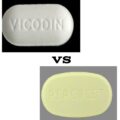Eye specialists have made incredible advancements in vision correction surgery, also known as refractive and laser eye surgery, in recent years. There are many types of vision correction surgeries. Most procedures work to reshape the cornea so that light passing through it can focus on the retina. Other surgeries replace the lens of the eye. In this article, we will look at two different corrective surgeries, what they improve, and how they work.
LASIK (laser in-situ keratomileusis)
This surgery reshapes the underlying corneal tissue to focus light into the eye and reach the retina. This procedure is ideal for patients who are nearsighted, farsighted or have astigmatism. What makes LASIK unique is its methodology. Eye surgeons create a flap of the outside layer of the cornea in order to access the underlying tissue. The procedure requires precision, and advancements in computer imaging technology allow LASIK specialists to create detailed corneal images and guide the treatment.
PRK (photorefractive keratectomy)
PRK is a procedure that uses a laser to reshape the cornea. Unlike LASIK, PRK only reshapes the surface of the cornea. It’s ideal for mild to moderate nearsightedness, farsightedness, or astigmatism. PRK can also work with computer imaging technology. Both eye surgeries have the same intent though they are different.
Most people are familiar with LASIK, a refractive surgery performed hundreds of thousands of times in the United States each year. But there’s another option that’s sometimes more desirable — or the only suitable choice — for patients seeking clear sight: photorefractive keratectomy, or PRK.
The procedures, each involving similar tools and length of time with a surgeon, have the same goal: correcting vision. But they are different in key ways. With LASIK, a thin flap is created on the cornea to allow the reshaping of the tissue beneath. The flap, which isn’t visible to others, will secure itself back to the eye, but it will always remain.
PRK, on the other hand, initially leaves the eye exposed. The cornea’s outer layer is removed entirely before the reshaping process; that layer will grow back over time. Prospective patients should speak with their doctor before making a choice.
“For some people, it’s a hard decision,” says Christopher Hood, M.D., a clinical assistant professor of ophthalmology and visual sciences at the University of Michigan Kellogg Eye Center, which offers both treatments. “But most just want to be able to see across the room without glasses or contact lenses.
How to Decide Between LASIK and PRK Surgery
How’s your vision? People with a high corrective prescription (a -8.00 or -9.00, for instance) often are better suited for PRK. That’s because, Hood notes, the flap-making element of LASIK requires a recipient to have “enough residual cornea to be structurally sound after reshaping” — a deficit seen in patients with poor eyesight and also in those with very thin corneas.
Do you have time to recover? After LASIK, patients can see clearly within a few hours. Because of the corneal surface removal, PRK takes a bit longer (and, unlike LASIK, some minor pain follows). Says Hood: “You’re about 70 percent healed after a week and your vision is about 90 percent healed after a month.” Those who get PRK must also wait at least a week to drive.
Will you take precautions? Although LASIK recipients must be careful not to rub their eyes in the days following the procedure, those recovering from PRK must take added care: “We don’t want you going out into the bright sun for a month to six weeks,” Hood says. In rare cases, unprotected light exposure can put PRK patients at risk of developing hazy vision.
Are you extremely active? Competitive athletes or people at risk of eye injury might consider PRK, Hood says. That’s because the corneal flap resulting from LASIK doesn’t exist, therefore eliminating any risk of damaging it. “Once you heal, your eyes are totally anatomically normal,” he says. Most people needn’t consider this a major factor; recreational sports pose little risk.
What’s your budget? Because it doesn’t involve the added step of creating a flap, PRK surgery is simpler and slightly quicker — and therefore cheaper, typically costing several hundred dollars less per eye than LASIK. Still, Hood notes, the savings alone typically aren’t enough to sway the decision one way or the other: “People want what’s best for them.” SEE: Types Of Ophthalmology Instruments and Their Uses Pictured






